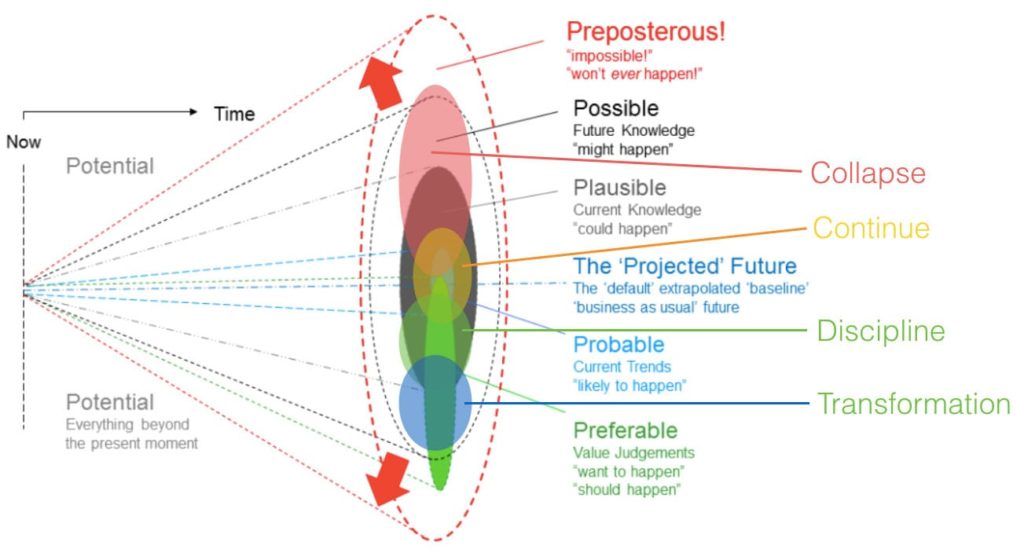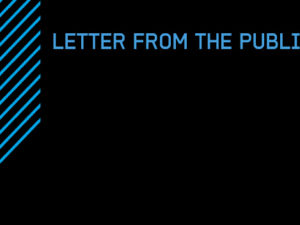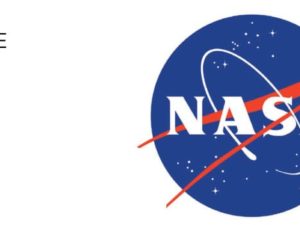
Prof. Hans-Peter Plag, PhD
Mitigation and Adaptation Research Institute
Old Dominion University Norfolk, Va.
www.mari-odu.org
IN A RECENT COLUMN, I IDENTIFIED MODERN CLIMATE CHANGE AS A SYMPTOM of a single-species high-energy pulse, with this pulse being the result of Homo sapiens being extremely successful in reducing all limitations to its growth. However, blinded by the success, humanity appears to be unable to recognize the many threats this basically unlimited growth of everything from people, resource usage, flows in the planetary physiology, changes in biodiversity and extinction, and pollution is creating.
Most scientists are very reluctant to interpret evidence they collect as indicators of existential threats. And those scientists who dare to point out that the current trajectory of Earth’s life-support system is not pointing towards futures that are desirable, or even tolerable, for humanity are often immediately criticized as being alarmists, and their work is often censored and not published in “respected” scientific journals.
But that might be slowly changing. Bloomberg Businessweek is not a publication that easily rings the alarm bell, but on September 26, 2018, it published an article that summarizes a “New Climate Debate: How to Adapt to the End of the World,” and refers to a number of recent publications indicating that more and more “researchers are thinking about social collapse and how to prepare for it.”1 The scientific papers cited in this article are at least partly published in highly respected journals, and they indicate that the climate system could be on a trajectory towards a hothouse planet.
The U.S. government also seems to have accepted that the very likely future is one of a much warmer planet – and decided that even trying to do something about it is futile: In a recent environmental impact statement concerning car emissions, the U.S. National Highway Traffic Safety Administration in the Department of Transportation concluded that the global temperature will likely increase by roughly 4° by 2100, and that it would be technologically and economically too challenging to try to change this. Therefore, the agency concluded, it makes little sense to attempt to limit car emissions, and justifies the U.S. President’s decision to freeze federal fuel- efficiency standards.2
P. Garnett asks the question whether the modern human impact on all aspects of Earth’s life-support system is leading to a total systemic failure of this system and suggests that humanity currently lacks “the tools and analytical capacity to understand the significance of these changes and therefore” cannot answer this question.3 However, we know that a 4° increase of global temperature above the pre-industrial level would challenge modern civilization on a global scale and most likely lead to the social collapse that the scientists see as inevitable.1
This increase would push the Earth’s climate as far above the pre-industrial level as the ice ages were below this level. And Earth during ice ages is a very different planet from what we know, with most of life taking place far away from the polar regions. On Earth in a hothouse state, life would have to concentrate far away from the tropics and closer to the polar regions. It is hard to imagine that our social and governance systems would be able to manage the migration of billions of people to new locations where the temperatures would still allow humans to go outside for some hours a day.
But climate change is not the only existential threat humanity faces. The threats of mass extinction and an impending state shift in the global biosphere are leading scientists to demand a Paris-style agreement “to promote increased habitat protection and restoration, national- and ecoregion-scale conservation strategies.”4 The threat to life in the oceans resulting from global warming, overload with nutrients and carbon, and plastic pollution has motivated many to step up and demand actions to protect the ocean.5
Having this clear view of what it means to push the planet outside of a state safe for humanity – and possibly into a hothouse state – it is surprising that we are not making every effort to avoid these increasingly likely and highly undesirable futures. Some thinkers argue that human animals are still mainly instinct-driven and that this leads us, like many other animals, to take more out of the Earth’s life-support system than it produces and put more waste back into it than it can handle, with little to no considerations for other human and non-human animals and little thoughts about the future.6 But unlike other animals, which can move on when their environ- ment no longer supports them, humans are the only animal that utilizes the whole planetary life-support system with no place left to move to if this planetary system no longer is a safe space for humans.
Some speculate that humans evolved to solve problems that pose immediate threats such as terrorism7 and to handle medium-sized, fast-moving challenges but not climate change,8 while others argue that humans did not evolve to not be able to handle slowly developing threats.9 In fact, it appears that the ability to recognize slowly developing threats documented in evidence and to act on this evidence depends more on cultural biases than on biological preconditions.10 This notion is also supported by the wide range of responses to the various global threats from ignoring the threats, to fundamentally redesigning consumption and production, to adapting to the already visible impacts.
Most of the dialogues about these existential threats are either focusing on justifying the knowledge about the past and the projections of the future or on discussing limited solutions addressing only parts of the challenge. Addressing these threats poses wicked or super-wicked problems. Wicked problems are social or cultural problems that are difficult or impossible to solve because of incomplete or contradictory knowledge, a lack of agreement on the definition of the problem, the number of people and opinions involved, the large economic burden associated with progress towards a solution, and the interconnected nature of these problems with other problems. Even more so, our col- lective ability to handle super-wicked problems is very limited. Super-wicked problems have four additional characteristics:
(1) time is running out;
(2) there is no central authority to address the problem;
(3) those seeking to solve the problem are also causing it;
(4) policies discount the future irrationally.11
Moreover, there is limited focus on developing foresight by considering the full spectrum of possible futures. The “Future Cone”12 is a good way of illustrating the different types of futures (Figure 1). The working hypothesis is that the future does not exist. Constrained by the past and pushed by decisions made in the present, it is created as time progresses. What we do today has an impact on the future that will emerge. This working hypothesis implies a deep responsibility for all of us: individuals, communities, businesses, governmental agencies, international organizations, etc.

Figure 1. The Future Cone: A spectrum of possible futures, modified and extended from The Voroscope, endnote 12.
Among others, the future is found to be archetypal with four generic types: Continue, Collapse, Discipline, Transformation.13 Much of the scientific discussion focuses on the projected and probable futures, which are constructed assuming that these futures are of the generic type “Continue.” Continued economic growth is typically the focus of this archetype, “which is the most common of the four archetypes because it is the ‘official’ future of all governments, educational systems, and corporations.”13
Considering futures of the “Collapse” type is very unat- tractive and several of our cognitive biases keep us from doing so, but these futures are well within the possible futures and overlap with the plausible ones. For the desirable futures, it is hard to imagine that they can be reached without major changes in human society, and they most likely are all in the generic types of “Discipline” and “Transformation.” This limits the dialog about these futures to often marginal groups
It may be that most humans are not well equipped and trained to handle wicked and super-wicked problems. What if we would start by finding out what we can agree on and have a dialog on what futures we want – and what futures we don’t want?
Can we agree on what we need to be fully developed humans? Physiologically, we all need air to breath, water to drink, and food to eat. We also need space to build our dwellings and grow food, and we need security and safety. We can only expect to meet these basic needs if we ensure a functioning planetary life-support system. Humanity is embedded in the Earth’s life-support system and is interacting with it through flows that have
accelerated recently very rapidly, initiating a shift to a new system state.
Can we expect to meet our basic needs in a hothouse state? Can we move together peacefully if a large part of the planet becomes uninhabitable because of heat, droughts, loss of soil, ecosystem collapse, floods, hurricanes, tornadoes, sea-level rise, and other still unknown environmental conditions on a hothouse Earth? Can we expect to have the life support we need if most of the mammals are gone, much of the topsoil is lost, and most pollinators are no longer around to ensure reproduction of plants that we need as food for us and our livestock? Most likely not!
“On Earth in a hothouse state, life would have to concentrate far away from the tropics and closer to the polar regions. It is hard to imagine that our social and governance systems would be able to manage the migration of billions of people to new locations where the temperatures would still allow humans to go outside for some hours a day.
Now we can ask whether we want a future where the basic physiological and safety needs no longer can be met for a large number, or even most, of humans. What morality would we be able to defend in a world that keeps many, if not most, from meeting their basic needs? This brings up the question central to deep adaptation: “What are the valued norms and behaviors that human societies will wish to maintain as they seek to survive?”14
If we agree that we want a future where most of the planet is still habitable for humans, providing the basic services each of us needs, and if we agree, as even the U.S. federal administration does, that we are currently on a trajectory that is not making this a probable scenario, can we then agree that we want to make at least an attempt to divert the trajectory somewhat towards a more desirable future? If so, we need a better
understanding of the abundant evidence of humanity’s impact on the planetary system’s trajectory and to use this understanding to inform our efforts of carving a pathway to the future we want.
“The U.S. government also seems to have accepted that the very likely future is one of a much warmer planet and decided that even trying to do something about it futile
One transdisciplinary approach to wicked and super-wicked problems is participatory modeling, which brings societal agents together in a joint effort to create a shared agreement on the goals and a shared evidence-based understanding of the challenges. There is an urgent need for enabling people to participate in such participatory modeling efforts. How can we best make evidence available to those engaging in participatory modeling? Scientists, Earth observation communities, those engaged in the development of collaborative data platforms, experts in artificial intelligence – we all can contribute to the development of means that provide societal agents access to the mounting evidence that tells the story of past interference with the life-support system and tools to explore the full spectrum of plausible futures.
This insight could support the development of societal therapies to correct the wrongs of the past and promote the right in the present. As an immediate action, the incapacity of fully assessing the human impact on our life-support system3 should lead us to moving forward very carefully and should put focus on less being better, instead of more economic growth that is clearly degrading the Earth’s life-support system.
Endnotes:
[1] Flavelle, C., 2018. New Climate Debate: How to Adapt to the End of the World – Researchers are thinking about social collapse and how to prepare for it. Bloomberg Businessweek, September 26, 2018. https://www.bloomberg.com/news/articles/2018-09-26/new- climate-debate-how-to-adapt-to-the-end-of-the-world.
[2] National Highway Traffic Safety Administration (NHTSA), 2018. Draft Environmental Impact Statement for the Safer Affordable Fuel-Efficient (SAFE) Vehicles Rule for Model Year 2021–2026 Passenger Cars and Light Trucks. U.S. Department of Transportation. Docket No. NHTSA-2017-0069. https://www.nhtsa.gov/sites/nhtsa.dot.gov/ files/documents/ld_cafe_my2021-26_deis_0.pdf.
[3] Garnett, P., 2018. Total systemic failure? Science of the Total Environment, 626, 684 – 688, DOI: 10.1016/j.scitotenv.2018.01.075.
[4] Dinerstein, E. et al., 2017. An Ecoregion-Based Approach to Protecting Half the Terrestrial Realm, BioScience, 67(6), 534–545, https://doi.org/10.1093/biosci/bix014.
[5] Plag, H.-P., 2018. “Prioritizing the Ocean: SDG #14: Life Below Water — Can We Change Our Priorities to Reduce the Mounting Threats to the Ocean?” On The Edge column, Apogeo Spatial, 33(3), Summer 2018. https://apogeospatial.com/prioritizing-the-ocean-sdg-14-life-below-water/.
[6] Ropik, D., 2015. The Threat to Life On Earth Because Human Instinct is More Powerful Than Reason. Medium. https://medium. com/@dropeik.com/the-threat-to-life-on-earth-because-human-instinct-is-more-powerful-than-reason-46bd06024264.
[7] Gilbert, D., 2006. If Only Gay Sex Caused Global Warming. Los Angeles Times, July 2, 2006. http://articles.latimes.com/2006/ jul/02/opinion/op-gilbert2.
[8] Jamieson, D., 2014. Reason in a Dark Time: Why The Struggle Against Climate Change Failed – and What It Means for Our Future. Oxford University Press: London.
[9] Jacquet, J., 2018. We Are Not Not Evolved to Respond to Climate Change. Center for Humans and Nature. https://www.humansandnature.org/mind-morality-jennifer-jacquet.
[10] Guiso, L., Monte, F., Sapienza, P., and Zingales, L., 2008. Culture, gender, and math. Science, 320, 1164-1165.
[11] Levin, K., Cashore, B., Bernstein, S., Auld, G., 2012. Overcoming the tragedy of super-wicked problems: constraining our future selves to ameliorate global climate change. Policy Sciences, 45(2), 123–152.
[12] Voros, J., 2017. The Future Cone. https://thevoroscope. com/2017/02/24/the-futures-cone-use-and-history/.
[13] Bengston, D. N., 2018. Principles for Thinking about the Future and Foresight Education. World Futures Review, 10(3), 193-202.
[14] Bendell, J., 2018. Deep Adaptation: A Map for Navigating Climate Tragedy, IFLAS Occasional Paper 2, www.iflas.info, July 27, 2018.



